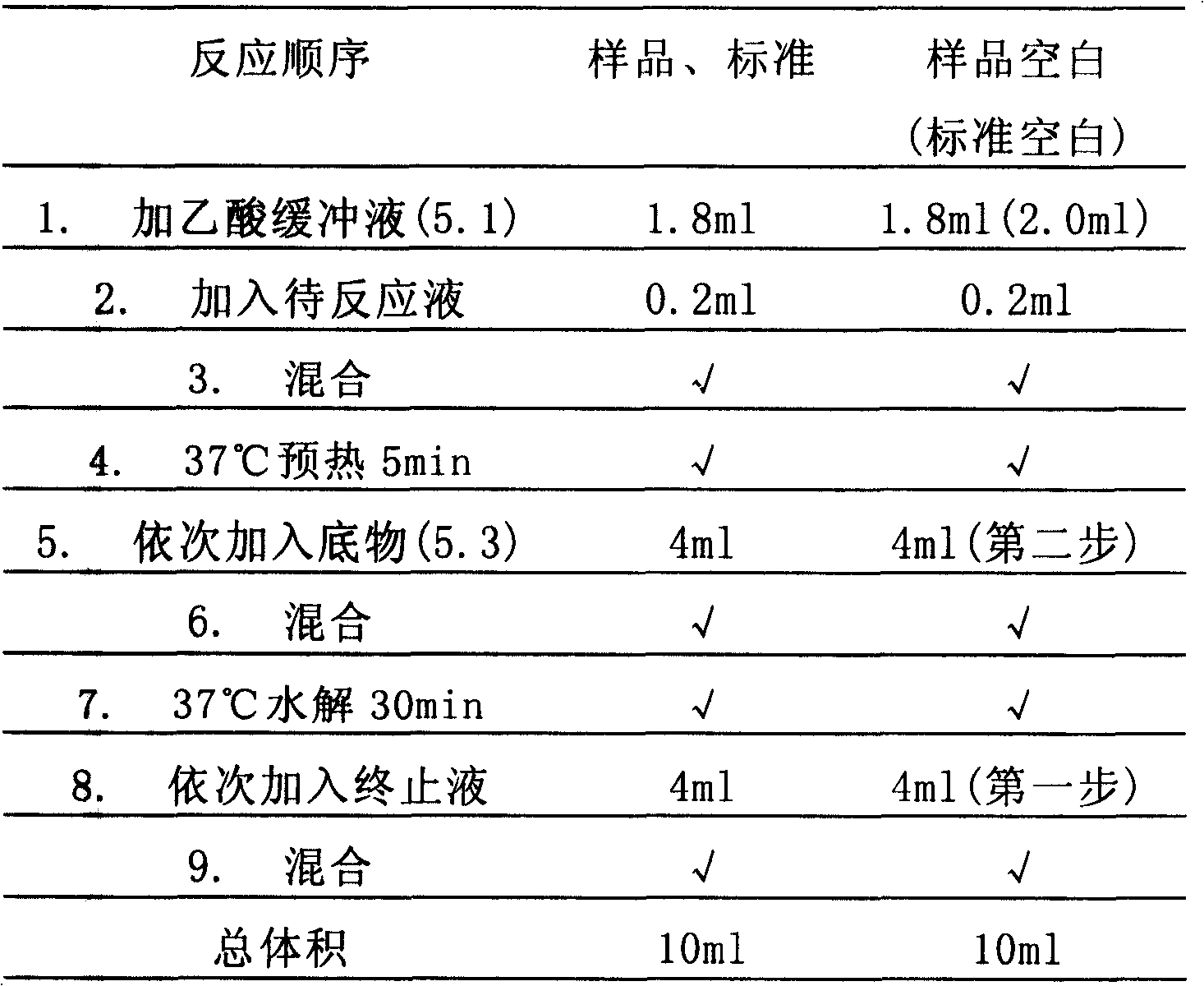High specific activity phytase gene and application thereof
A residue and amino acid technology, applied in high specific activity phytase and its application field, can solve the problem of unsatisfactory enzyme activity
- Summary
- Abstract
- Description
- Claims
- Application Information
AI Technical Summary
Problems solved by technology
Method used
Image
Examples
Embodiment approach
[0068] As an embodiment of the present invention, the gene encoding the AppA-M protein of the present invention can be used to prepare a transgenic plant, and the obtained transgenic plant expresses the AppA-M protein. Using the transgenic plant as a feed ingredient for animals can provide a stable source of phytase in the feed, thus no additional addition of phytase is required.
[0069] In addition, the gene encoding the AppA-M protein can also be introduced into the animal body, so that the animal itself can express the AppA-M protein, making the AppA-M protein an endogenous enzyme. This saves a lot of extra work from external sources.
[0070] The present invention also provides a composition, which contains a safe and effective amount of the AppA-M protein of the present invention and a food or feed acceptable carrier or excipient. Such carriers include, but are not limited to: buffer, dextrose, water, glycerol, ethanol, acetic acid, wheat bran, corn cob, or combinations...
Embodiment 1
[0076] Embodiment 1: Cloning of high specific activity phytase gene
[0077] 1. Collection of samples
[0078] Collect a large number of soil samples or specimens in the rumen of animals from forest areas where dead leaves have accumulated for many years. Because these places have a large amount of plant-based phytic acid, they can be screened to obtain bacteria with a strong metabolic ability for phytic acid, thereby A phytase gene with high specific activity properties was isolated.
[0079] 2. Isolation of community-level total DNA from soil samples using the rabbit culture method
[0080] Weigh 2 g of the sample, add 0.6 g of fine glass beads (d<0.11 mm), and shake twice at 4000 rpm. Add 300μl 2% SDS + 12% phenol Tris buffer (pH8.0) solution on ice for 1 hour, add an equal amount of phenol Tris buffer, pH8.0 (about 700ml), mix well, and centrifuge at 4°C, 13,000rpm 5 minutes. Add 0.1 volume of 3M NaAc pH 5.2 to the upper layer solution, mix well, add 0.6 volume of isop...
Embodiment 2
[0087] Embodiment 2: Transformation and artificial synthesis of high specific activity phytase gene
[0088] According to the gene sequence encoding the mature protein of Escherichia coli phytase, according to the codon preference of Pichia pastoris, sequence modification was carried out without changing its amino acid sequence, and at the same time, AT sequences (ATTTA, AATAA, The emergence of AATTAA, etc.). And according to the multi-cloning site design of the cloning vector used, adding suitable restriction endonuclease sites, the whole gene is divided into A (161bp), B (287bp), C (325bp), D (225bp), E ( 235bp) into 5 parts, and then each part is divided into single-stranded nucleotide fragments with a length of no more than 60 nucleotides for artificial synthesis.
[0089] After removing the 66bp signal peptide coding sequence at the N-terminal, the gene has a full length of 1233bp. According to the codon bias of Pichia pastoris, without changing the amino acid sequence,...
PUM
 Login to View More
Login to View More Abstract
Description
Claims
Application Information
 Login to View More
Login to View More - R&D Engineer
- R&D Manager
- IP Professional
- Industry Leading Data Capabilities
- Powerful AI technology
- Patent DNA Extraction
Browse by: Latest US Patents, China's latest patents, Technical Efficacy Thesaurus, Application Domain, Technology Topic, Popular Technical Reports.
© 2024 PatSnap. All rights reserved.Legal|Privacy policy|Modern Slavery Act Transparency Statement|Sitemap|About US| Contact US: help@patsnap.com









